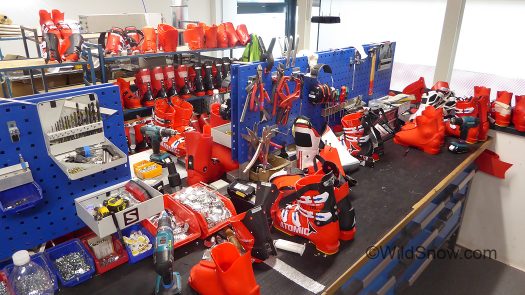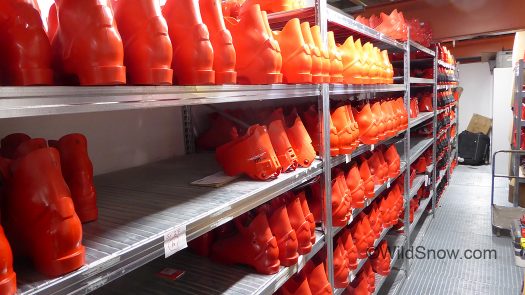
In the “FIS” shop at Atomic, they work with racer’s skis, boots and bindings. The boots got most of my attention. Racer boots are built from cuff and scaffo ‘blanks’ that the techs drill with exactly located holes for the cuff pivots and buckle attachments. The blanks are molded from various types of plastic. Reminds me of one of those scifi clone movies where you pick your body off a rack and install your mind.
Aspen. We spectated wonderful ski racing at the alpine World Cup Finals this past weekend. Lots of countries represented. (We particularly enjoyed seeing three Italian gals podium for the same race). With Atomic athletes Marcel Hirscher and Michaela Shiffren getting handed their crystal trophies, I figured a blog post sharing my recent visit to the Atomic “FIS” shop would be better now than later. I was sworn to secrecy on some of the cool stuff those guys use to tune boots, but I still got a few fun shots of the Redster boot clinic in its red glowing glory.

I happened to be at Atomic HQ during World Cup World Championships. Atomic puts immense resources into their race program — clearly they get returns in sales — IF their athletes win. In this case, staff filtered in from various offices to cheer Marcel Hirscher as he aced another win.
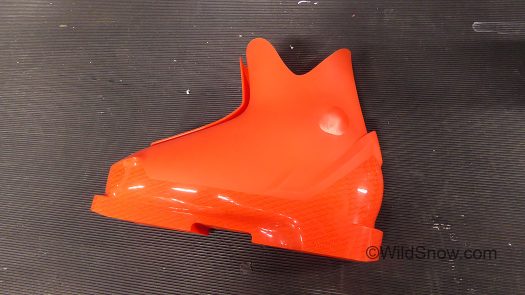
Scaffo blank. Lower shell walls are around a centimeter thick (for strength and to allow grinding) and the sole is thick to accommodate being angle planed. Each racer’s cuff and sole angles are a matter of record, so each pair of boots can be precisely built.
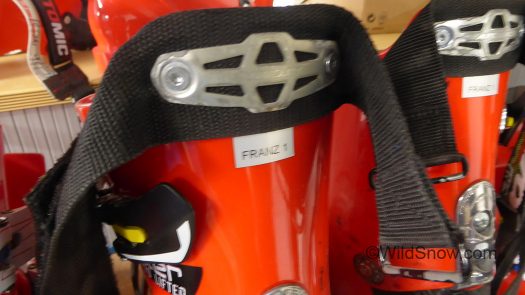
Boots being customized bear the names of athletes such as Max Franz. I was told Hirscher travels with 30 pairs of boots and 70 pairs of skis. Don’t be embarrassed when you show up in Europe with two pair of planks.
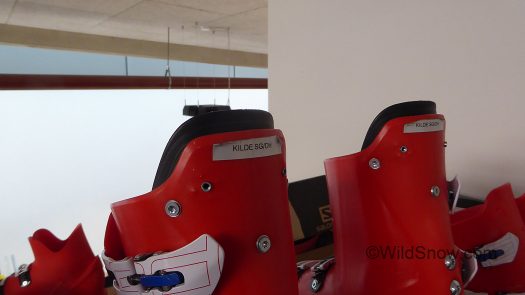
Norwegian racer Aleksander Kilde’s boots getting the treatment. Clearly, these guys must use bins and bins of screw rivets. I’m realizing that changing the buckle location on a touring boot, now and then, is not something to panic about.
WildSnow.com publisher emeritus and founder Lou (Louis Dawson) has a 50+ years career in climbing, backcountry skiing and ski mountaineering. He was the first person in history to ski down all 54 Colorado 14,000-foot peaks, has authored numerous books about about backcountry skiing, and has skied from the summit of Denali in Alaska, North America’s highest mountain.

